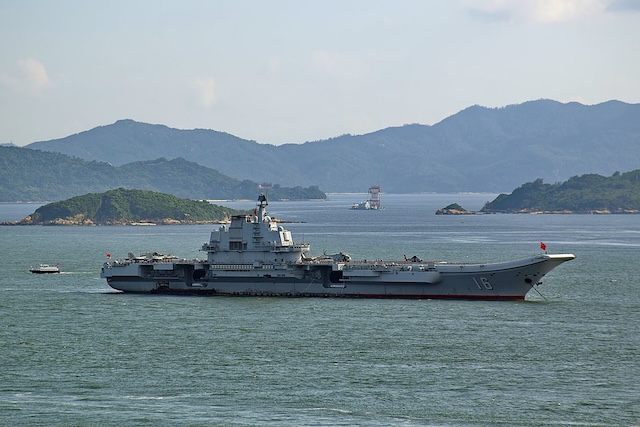Type 001-class (Liaoning / CV-16)
Summary
| Origin country | 🇨🇳 China |
| Category | Aircraft carrier |
| Subtype | Aircraft carrier |
| Manufacturer | Dalian Shipbuilding Industry |
| Year commissioned | 2012 |
| Approx. unit cost | $120 million |
| Units | 16 Liaoning |
| Current operators | 🇨🇳 China |
Description
Originally laid down for the Soviet Navy in 1985 as a Kuznetsov-class aircraft carrier, the vessel was launched in 1988. Construction was halted following the dissolution of the Soviet Union, with the ship left incomplete in Ukraine. The stripped hulk was subsequently sold to a Chinese buyer in 1998. After a protracted journey from the Black Sea, the vessel arrived at a naval shipyard in northeast China in 2002, where it underwent extensive rebuilding and modernization before its commissioning into the People's Liberation Army Navy.
The ship is designated as a Type 001 aircraft carrier and operates on a Short Take-Off But Arrested Recovery (STOBAR) system, featuring a ski-jump for launching aircraft. During its refit, the original anti-ship cruise missile launchers were removed to enlarge the internal hangar bay, reconfiguring the vessel solely for aircraft operations. Its defensive armament is composed of close-in weapon systems and short-range air defense missiles. The carrier's air wing is designed to carry approximately forty aircraft, including fighter jets, anti-submarine warfare helicopters, airborne early warning helicopters, and rescue helicopters. Due to its Soviet design heritage and STOBAR configuration, the operational range and payload of its carrier-based fighters are limited, and the air wing relies on support from shore-based assets for long-range radar and anti-submarine capabilities.
Commissioned in 2012, the carrier was initially classified as a training ship to allow the Navy to develop familiarity with aircraft carrier operations. It was declared combat-ready in 2016 and officially shifted to a combat role in 2019. The vessel has since participated in numerous exercises and deployments, operating in the South China Sea, East China Sea, and the Western Pacific, at times passing through strategic straits near Japan. It has taken part in large-scale, live-fire naval drills and has conducted joint training exercises with other carriers in the fleet, demonstrating growing confidence and maturity in its operational tempo.
Technical specifications
| Displacement | 60900 tons |
| Range | 3850 km at 18 knots |
| Endurance | 45 |
| Crew | 1960 members |
| Width | 74.4 m (244.1 ft) |
| Length | 306.4 m (1005.2 ft) |
| Air Park | 40 aircrafts, including: * 24 Shenyang J-15 * 6 Changhe Z-18F * 6 Changhe Z-18J * 2 Harbin Z-9 |
| Propulsion | Steam TV12 turbines, 8 KVG-4 boilers,4 shafts, 200,000 hp |
| Thrust | 200000 hp |
| Armament | * 3 × Type 1130 CIWS |
| Maximum speed | 32 knots |
